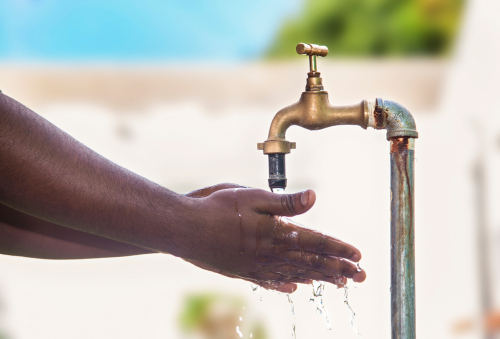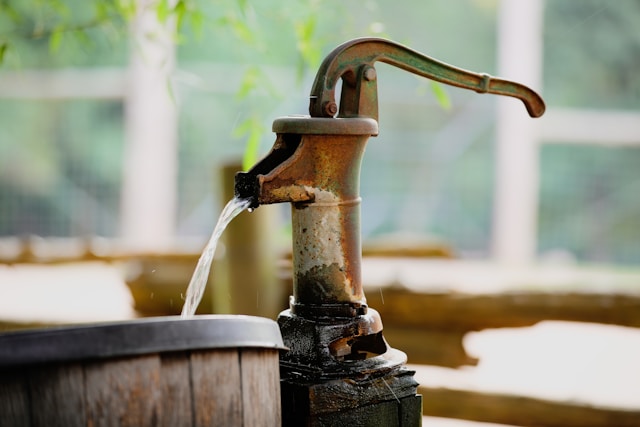In some ways, mankind tends to be a rather unthinking species, subject to tunnel-vision in some of the most important areas of life. I say this because, even now, with global climate change threatening water availability, we all still tend to think of water as being an ongoing and easily available resource in our lives. However, on a more local level, the recent severe droughts across the country have made us all re-look at this valuable and life-giving resource. Municipalities are finding it more and more difficult to cater to the needs of their towns, cities and outlying areas as rainfall decreases and water storage facilities come under increasing pressure.

How is water stored naturally below ground?
Water can be sourced from rainfall (or melting snow, in areas which are lucky enough to get it) – so, essentially, from the skies – or from below ground where it is naturally collected and stored in bodies of underground rock or stone known as aquifers. These aquifers lie beneath the top wet ground surface zone which we call the ‘water table’. Aquifers are normally self-perpetuating in that they are naturally replenished when it rains, but this does not mean that they cannot be de-watered or over-used and will eventually dry up.
All rocks are not the same.
Rock can be impermeable or permeable, meaning that it can either reject or absorb, store and transmit water. Permeable rock includes sandstone, fractured limestone, conglomerate and unconsolidated sand and gravel, with gravel being the most permeable. Good aquifers include fractured volcanic rocks such as columnar basalts, which can be found around the world, including Africa.
Underground water is more plentiful (and cleaner) than aboveground sources
The good news is that groundwater can be found almost anywhere. It is estimated that there is over one thousand times more water in the ground than can be found in all the world’s rivers and lakes, since there is some measure of underground water almost everywhere. This below-surface water forms part of the natural water cycle, and is mostly clean and ready to drink as the soil acts as a filter by impeding the movement of harmful underground chemicals and minerals, as well as living organisms. Where brownish or dirty water appears in shallow well-points, one needs to look for contaminants and surface infiltration into the water, dwindling levels of water and minerals such as iron and possibly manganese, frequently found together in sedimentary rocks, being present in the water. Surface water in rivers, lakes and dams is subject to pollution from the air, rubbish, dirt and dust and airborne chemicals sprayed in the vicinity, and should be boiled or appropriately chemically treated before drinking. Spring water and much of our bottled water is pumped from professionally installed boreholes.
How do we access this underground water?
Water is sourced from these underground reservoirs by sinking wellpoints or boreholes and pumping or lifting the water to the surface. Both boreholes and wellpoints are designed to penetrate these aquifers in order to access the water. However, this is not a job for an amateur gardener with a burning desire to dig very deep holes, but an exercise which is carried out by experienced and professional pump and borehole specialists.
What is the general depth of a borehole?
Borehole specialists are knowledgeable and skilled in knowing where to drill for water, and in ensuring that boreholes are sunk to the right depths in order to tap into the aquifer correctly to maximise water output. In South Africa, boreholes can range in depth from between 30.48 metres to 152 metres (usually those intended for household use only), but they can be as deep as 305 metres. Water may commonly be found at about 91 metres below ground. It is worth noting that groundwater below approximately 100 metres is considered to be generally of a lower quality than that in the upper levels, although there are some municipal, agricultural and industrial users who have had to make use of this water.
What are the different ways of finding water?
Although it may be fall under the banner of a ‘pseudo-science’, dowsing for water has achieved some success over the years, with some people claiming that it has proven to be accurate in the majority of attempts to find water through this method. Dowsing involves the use of a forked stick or a pair of bent wires, and where there is an indication of below-ground water, a stick will bend towards the ground or the wires will cross at that point. Usually this method is not used, and the services of a professional geophysicist or hydrogeologist may be employed to undertake a hydro-geological survey in order to estimate the sustainable yield of a borehole, particularly where large amounts of water are needed, such as on farms, or the water is located deep within the ground.
How do you test for the right size and strength of the pump?
Once the borehole has been drilled, a PVC casing is installed which allows for the placement of a submersible pump which will bring the water to the surface. The size and strength of the pump to be installed is determined by carrying out a yield test, which can be one of three types :
Step Test, in which the pump rate is steadily increased at regular intervals of, say, one hour increments. This test is a good indicator of the effectiveness of the borehole;
Constant Rate Test (CRT). As the name implies, this indicates that a constant pump rate is employed for a period ranging usually from 8 to 48 hours. This test gives an indication of the long-term sustainable yield of a new borehole;
Recovery Test. In this test, which follows the CRT, the water level recovery rate of the borehole is measured once the pump has been stopped, and if the aquifer has been ‘dewatered’ during the pumping process, i.e. the extraction of water should never exceed the natural water ‘recharge’ rate.
How long will my borehole be productive?
In terms of time, a borehole should be productive for between 50 to 80 years, and provide a return on the initial installation cost in a fairly short period. As far as maintenance is concerned, these costs should be very low in the first 10 or 15 years, but it is to be expected that these will inevitably increase over time.
Yield-wise, the borehole will continue to produce clean water for generations. There is only one caveat to this : if you are sharing a borehole with a neighbour – or neighbours – you need to be mindful not to exceed a daily maximum pumped volume in order to allow for the natural replenishment of the aquifer. You also need to work out – and stick to – an agreement between all users on the daily, weekly, or monthly volume per user. Over-drawing by any one person can be detrimental to all involved and result in shortages of water for neighbouring users. It’s all about trust and good sense, folks!
